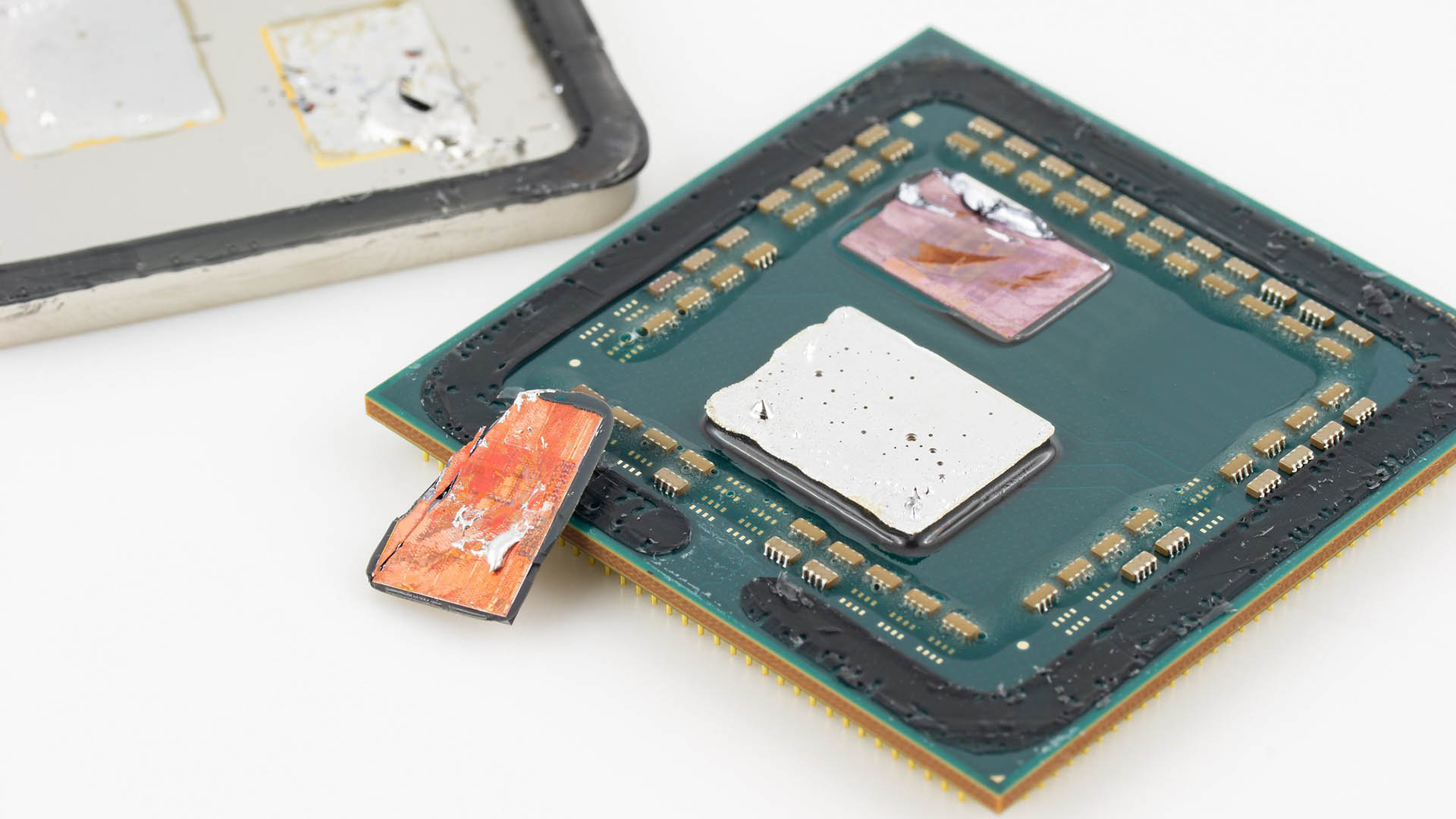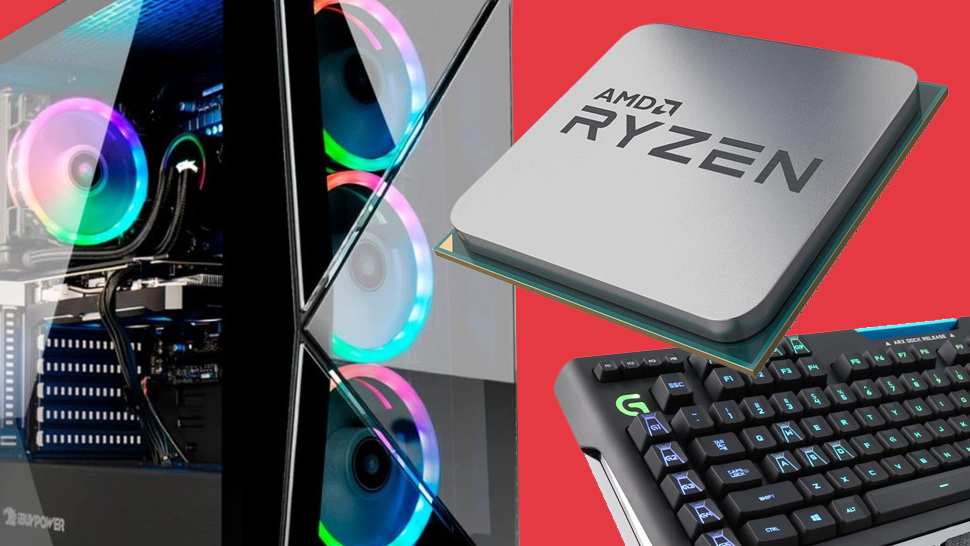Here's an AMD Ryzen 5 5600X delidded and destroyed. You know, for science
Only if you're not squeamish.

We throw around the words CCD, CCX, and cIOD a lot, like in our Ryzen 9 5900X review, but it's not too often you get to actually see the components of a chip cut from silicon in front of your very eyes. Lucky for you, photographer Fritzchens Fritz is doing God's work and snapping silicon with fantastic clarity. And their latest project? AMD's Ryzen 5 5600X and the Zen 3 architecture.
And Fritz just about pulled off the heist of the century, too: managing to get the heat spreader near-enough completely off the multi-chip package without damaging any of the key comp—oh, there go a couple of cores.
Well, never mind, you still get most of the picture.
The process of delidding a CPU is always a fraught affair—the process of removing the metal heat spreader on top of a chip and exposing the die itself—and no less with the AMD Ryzen 5000-series. That's because the heat spreaders on these chips are soldered in place, as opposed to thermal paste on some of Intel's older or low-end chips.
While beneficial for temperatures, a soldered integrated heat spreader (IHS) is tougher to remove, as Fritzchens Fritz found out during this daring feat in order to snap a pic.
Still, what remains is a clear image (below) of the newly-redesigned Zen 3 CCX, the cluster that houses the actual cores of the chip. As clear as day you can see at least five of the eight-core CCX. And if you're wondering, even the six-core Ryzen 5 5600X will feature a full eight-core compliment, two of which will just be non-functional.
The Zen 3 CCX features a pretty significant change from the Zen 2 CCX. While both are 7nm parts that come in a single chiplet package, or CCD, the Zen 3 CCX features a total of eight-cores, while the Zen 2 CCX only fit four.
Keep up to date with the most important stories and the best deals, as picked by the PC Gamer team.

Hence only a single CCX is now required per CCD to hit an eight-core chiplet, and the redesign also has benefits for cache too.
Where a four-core CCX would necessitate a long round trip through the accompanying cIOD die in order to communicate between four-core clusters, the eight-core CCX needn't. That means for those tasks which require a healthy handful of speedy cores, such as gaming, the time spent moving data around has been significantly reduced. Instead, these cores may all access the same L3 cache, and the end result is significantly improved performance for these tasks.

Black Friday 2020 deals: the place to go for the all the best Black Friday bargains.
Therein lies some of the secret to Zen 3's success over Zen 2, and over Intel for that matter. What you're looking at in Fritzchens Fritz's picture is really the product of a great deal of engineering effort to close the gap in gaming.
You can take a look at the full (slightly gory) process of tearing down the Ryzen 5 5600X over on Fritzchens Fritz's Flickr page. Also check out this great diagram made by user Locuza on Reddit, using the die shot from Fritz with a couple of touch ups, for a better idea of how it all comes together under the hood.
And, for what it's worth, a working Ryzen 5 5600X is something to behold. Alan's testing his at the moment, and the full review will be here soon, but *spoilers* it's a glorious gaming chip.
"It's everything a gamer could ask for: 10900K performance for half the price," says he. "And you actually get a cooler with this one."
Thanks Fritzchens Fritz for taking these great photos, and more importantly for kindly sharing them with the rest of us.

Jacob earned his first byline writing for his own tech blog. From there, he graduated to professionally breaking things as hardware writer at PCGamesN, and would go on to run the team as hardware editor. He joined PC Gamer's top staff as senior hardware editor before becoming managing editor of the hardware team, and you'll now find him reporting on the latest developments in the technology and gaming industries and testing the newest PC components.

